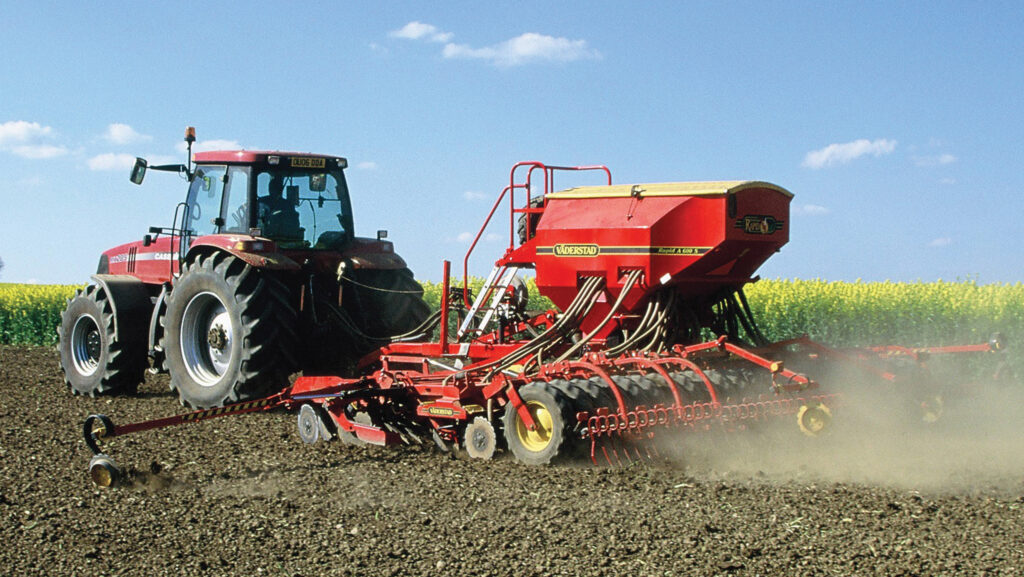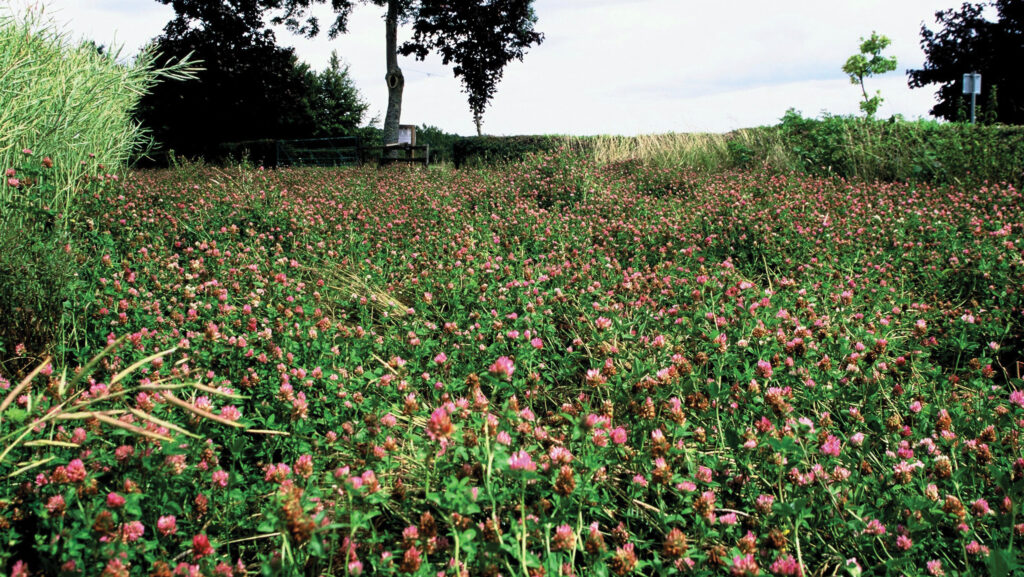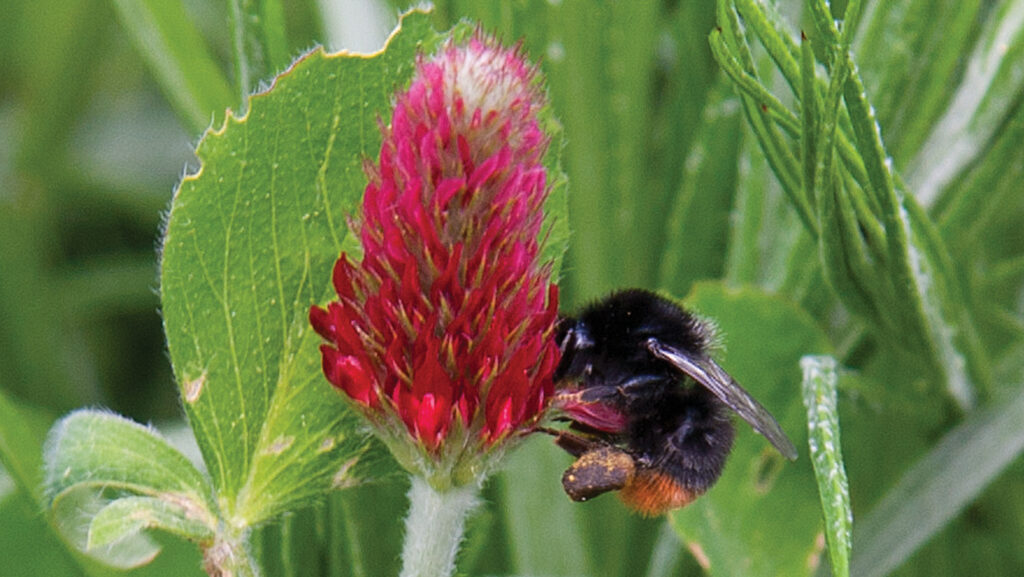Making the most from pollen and nectar mixes in SFI
 © Marek Nowakowski
© Marek Nowakowski
Only about 5% of Sustainable Farming Incentive (SFI) agreements in the 2023 scheme have opted for pollen and nectar flower mixes (AHL1).
This makes it one of the least popular options, according to the latest Defra figures published in July 2024.
Paying £739/ha, which is lower than the £853/ha for winter bird food on arable land (AHL2), the aim is to provide food for beneficial insects such as pollinators.
See also: How to introduce the SFI no-till action into cropping
It also aims to encourage natural crop pest predators by growing a pollen and nectar flower mix producing flowering areas from late spring through the summer.
Rules for those applying for CAHL1 (formerly AHL1) in SFI 2024 are very similar for those who applied for the 2023 scheme, once the 25% area limit was introduced in late March 2024.
For the 2024 scheme, 10 actions including CAHL1 are designated for “limited areas”, where the total area of the 10 cannot exceed 25% of the farm’s area.
3 golden rules for pollen and nectar
- Broadcast seed, don’t drill
- Sow at the right time of year (April or August)
- Be prepared to mow frequently in year one.
Location

© Marek Nowakowski
To maximise the wildlife value of pollen and nectar mixes, they should be sited on a warm, sunny, sheltered site, ideally on the south or west side of a hedge.
This advice comes from Marek Nowakowski, an environmental stewardship consultant from the Wildlife Farming Company.
Marek was involved in the design and research of the original pollen and nectar strips, alongside the Centre for Ecology and Hydrology.
“They are no good on the north side of the hedge, although some farmers will stick them there as they’re less concerned about delivery. But in that case, look for a different option,” he suggests.
Pollen and nectar mixes can be used to straighten the edges of cropped fields and to protect watercourses, while ideally, it should be sited on land with lower fertility.
“The enemy of botanical diversity is fertility,” Marek says. “Crudely, if the phosphate index is over two, the soil is inclined to be pretty fertile, which will make your mowing and management regime quite intensive.
“Nitrogen from the organic soil fraction will become less available as there are no cultivations after sowing to mineralise the nitrogen,” he explains.
It’s not impossible to grow pollen and nectar mixes on fertile soils, he stresses, but the management demands will be higher.
With the smallest insects able to fly around 250m from nests, they would ideally occupy four or five flowering corners in every square kilometre, Marek suggests.
Sowing date
While Defra’s advice for drilling date is flexible, Marek says April is generally the prime time to sow because the ground is warming and will still have moisture typically, with August as an alternative.
“Once you get to the end of September, many of the species won’t have established big enough to cope with a bad winter,” he warns.
Where there are moderate to high levels of blackgrass, Marek suggests cultivating in autumn and sowing in spring as blackgrass predominantly germinates in autumn, and allows time to reduce populations.
“I’ve seen lots of farmers fail with an autumn sowing and succeed with a spring.”
Following a cereal will also help with weed management, as volunteer cereals present fewer problems than, for example, volunteers from oilseed rape or beans.
It’s also possible to grow pollen and nectar mixes after some other stewardship options.
“Pollen and nectar shouldn’t be a problem after bird food as that’s mostly annual species and you can mow your way out of problems.”
But avoid following AHL3 grassy field corners or blocks, or other options where the land has been left for a few years, as grass or perennial weeds will be an issue.
“It’s difficult to take perennials out of perennials. Sowing after a cereal minimises that risk.”
Establishment and management
Seed should be broadcast on the surface of a fine, firm seed-bed, rather than drilled, Marek stresses.
“Nature’s way of spreading risk and plant survival is to grow when on the surface and go dormant when buried. In any case, show me a drill that can drill at 1cm.”
Once broadcast, roll using a ring roll rather than a flat roll to maximise seed-to-soil contact.
Post-sowing, the key is to defeat annual weeds while encouraging the sown perennial species, Marek says.
“Mowing annuals as often as necessary suppresses annuals and switches from annual dominance to perennial dominance. Never be frightened of mowing in year one.”
Mow when either the weeds are covering the sown species, or if they are halfway up the wellies during year one, he advises.
“You can’t kill a perennial by mowing, it just delays flowering.”
Removal of cuttings is preferable, but if this isn’t possible, then cut more frequently to produce less mulch to smother the sown perennials.
Make a last cut during the latter half of September, by which time most of the insects requiring pollen and nectar will have reached the end of their life cycle or gone into hibernation.
“If you have blackgrass, this will give a fairly significant reduction,” Marek says.
“Check again by the end of March for any autumn or early spring growth in year two, and mow again if you have more than 25cm of growth, as otherwise it will become a tangly nightmare later in the season.
“Towards the end of May, cut half the area, which will extend flowering by six to eight weeks. That will give insects like queen bumblebees a food source to stock up on before hibernation.”
But check the area for ground-nesting birds before mowing, he says.
While under SFI rules, pollen and nectar mixes can be rotational. Marek says rotating annually after mowing won’t give any wildlife benefits.
“Why would you rotate it – you’ve put it on a piece of land you don’t want to farm.”
Committing to growing CAHL1 for at least three years, and possibly even multiple three-year schemes, means growers should consider more expensive, better-quality mixtures, he adds.
“Research shows the better the mixture quality, the better the wildlife delivery and the longer it lives.”
Higher-quality mixtures cost around £600/ha, especially if using wild cultivars rather than those bred specifically for agricultural production. “Wild cultivars live a lot longer than the cheaper agricultural ones.”

© Marek Nowakowski
Species
Choosing which pollen and nectar species to grow should depend on what habitats are being created on-farm.
“There are opportunities for meaningful integrated pest management. For example, we know umbellifers, such as cow parsley, wild carrot, and so on are great for short tongue insects like hoverflies – the larvae of which eat aphids.”
Another example is the species chosen that will flower at the right time to attract pollinators to a bean crop will be different to those needed for an apple orchard.
“We can now dial in the right mixture for a specific job or habitat.”
SFI rules say there must be at least six flowering species, including two from common knapweed, musk mallow, oxeye daisy, wild carrot and yarrow.
To those, Marek recommends bird’s-foot trefoil, alsike clover, red clover, red campion and lucerne.
“But make sure the two clovers don’t add up to more than 20% of the mix, particularly if you want the mix to last more than three years, as they will start to die in the third year, leaving gaps for undesirables.”
That gives a shopping list of plants with a variety of shapes and structures, which will help maximise the appeal to the widest range of insects, he concludes.
In the series
- How to achieve success with IPM2 flower-rich margins in SFI
- How to maximise performance of NUM3 legume fallows
- How to succeed with the AHL2 winter bird food option in SFI
- How to get the best out of IPM3 companion cropping in SFI
- How to get the most from SAM2 overwinter cover crops
- Tips to maximise SFI herbal leys in arable rotations
